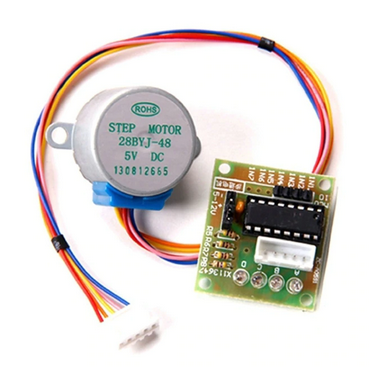Motor exercises
Introduction
We have 3 types of motors that are used for different purposes and controlled in different ways:-
DC motor used in continuous movement e.g. a propeller, motor to move a robot car etc.
-
Servo motor: A motor that allows to go to a precises angle used e.g. to steer the car, model airplane or
- Stepping motor: Move to a precise position or angle. In contrast to the servo motor the angle is not limited and can make several full turns
| DC motor | Servo Motor | Stepping motor |
 |
 |
 |
Exercise 1: The DC Motor
Make sure the solder jumpers are correctly inserted on the motor shield. Check with i2c_scan from the exercise on the SHT30 that you can reliably see the motor shield on address 0x30 of the I2C bus. Run I2C_scan several times and make sure the motor shield does not disappear from the bus. If this happens you will have to upgrade the firmware for the STM32F030 micro-controller providing the I2C interface to the motor shield. Read the section “Reprogramming without soldering” very carefully and follow the steps. If something is not clear, please don’t hesitate to ask! https://hackaday.io/project/18439-motor-shield-reprogrammingExercise 2: The servo motor
Connect the servo motor as described on the TWiki page. For the hobby servo motor the power delivered through the USB bus is sufficient. Check out the description of PWM in the MicroPython manual: https://docs.micropython.org/en/latest/esp8266/tutorial/pwm.htmlExercise 3: The stepping motor
If you do not know in detail how stepping motors work, please have a look at chapter Lecture 9 of the course on embedded systems: https://afnog.iotworkshop.africa/do/view/Embedded_Systems/Lecture9:SteppingMotors-
Single phase forward and backward
-
Double phase forward and backward
-
Half step forward and backward.
-
__init__(self,p1=_PHASE1,p2=_PHASE2,p3=_PHASE3,p4=_PHASE4) : creating a motor instance. You may pass the coil pins as keyword parameters
-
clrAll(self) : sets all coils off
-
stepMode(self,mode=None): Sets the stepping mode
The available stepping modes are declared as Class variables as follows:SINGLE_PHASE_FORWARD = 0
SINGLE_PHASE_BACKWARD = 1
DOUBLE_PHASE_FORWARD = 2
DOUBLE_PHASE_BACKWARD = 3
HALF_STEP_FORWARD = 4
HALF_STEP_BACKWARD = 5 -
move(self,noOfSteps): Moves the motor by the number of steps given in the currently set mode.
Comments
Ideas, requests, problems regarding TWiki? Send feedback



